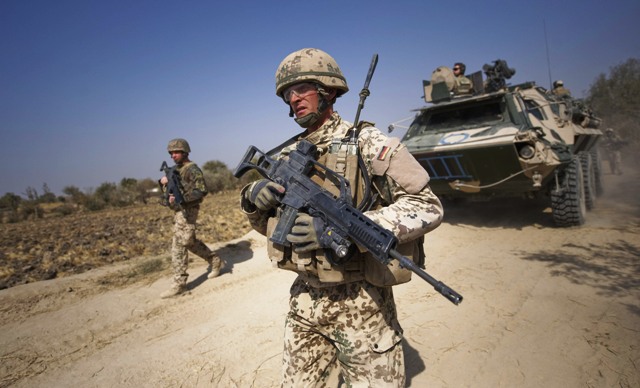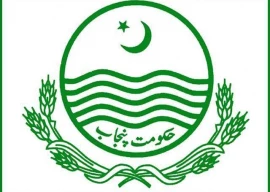
In Afghanistan, people now live 20 years longer on average than under Taliban rule, they say; 7 million more children attend school and women are 80 percent less likely to die in childbirth.
The spectre of an abrupt departure of all US and Nato soldiers from Afghanistan at the end of next year now imperils these gains, they warn, and endangers progress on the massive development challenges that remain.
Unless the Obama administration can persuade Afghan President Hamid Karzai to sign a security pact that would permit a modest US force to remain beyond 2014, the United States is almost certain to drastically scale back aid to Afghanistan.
That would force aid groups to work under more precarious security conditions and compete for scantier aid dollars.
It would be "a complete catastrophe" to pull the entire US force from Afghanistan next year, said Andrew Wilder, who directs Afghanistan and Pakistan programs at the US Institute of Peace and spent years working in the region.
A deterioration in security conditions would hamper oversight of aid projects, possibly making a deeply sceptical Congress even more reluctant to fund Afghan aid.
A smaller staff at the US embassy in Kabul would also make it more difficult to sustain many US aid programs.
"My judgment is no troops, no aid, or almost no aid," James Dobbins, the US envoy for Afghanistan and Pakistan, told Congress this month. "The political support for the aid comes from the military presence."
Last year, the United States and other donors promised to provide Afghanistan $16 billion in aid through 2015, at least half of which must go through Afghan government coffers. Afghanistan's government also promised to work toward benchmarks in governance, human rights and fighting corruption.
Since the Taliban government was ousted in 2001, the United States has already spent at least $88 billion on Afghan aid, not including the much larger bill for combat costs.
After arduous negotiations on the US-Afghan security agreement were completed last month, Washington expected Karzai to sign it, paving the way for a force of possibly around 8,000-12,000 US and Nato troops to remain after 2014. There are about 39,000 US soldiers in Afghanistan now.
Instead, Karzai has refused to do so, suggesting the pact should be signed following Afghan presidential elections in the spring. The Obama administration says that would not leave Washington and its allies enough time to plan for a possible post-2014 mission.
'Incredibly challenging'
Even if US troops are permitted to stay, the aid effort will be shifted to focus on defending gains that have been made in recent years, rather than setting ambitious new goals, Larry Sampler, a senior US Agency for International Development official, told lawmakers during a hearing this month.
US and Nato nations are already planning to shut down all 28 Provincial Reconstruction Teams, the outposts that have delivered assistance in remote areas, by the end of 2014.
Assuming the US Congress continues to fund some level of Afghan aid, the United States does have the capability to continue delivering assistance. It would work through relief groups and multilateral organizations, or possibly even run the program from a neighbouring country, as it did during earlier Afghan conflicts.
Some UN agencies and private aid groups remained in Afghanistan during the chaos of the 1980s and 1990s, even when donor support dwindled after invading Soviet troops withdrew in 1989. The ensuing conflict between mujahedeen groups made work more difficult for aid workers, and later Taliban restrictions hindered their ability to assist women and girls.
Between 1985 and 1994, USAID officials in neighbouring Pakistan ran a cross-border aid program for Afghanistan.
USAID, which works largely through small non-governmental organizations and large development contractors, could still award aid projects if all troops withdraw, and Washington would maintain its support for the UN development agencies and other partners.
Still, Sampler said, "If there were no (security deal) and there were a decision to continue to program (civilian assistance), it would be incredibly challenging."
Bangladesh, not Sweden
Wilder said he was a proponent of reducing US civilian assistance to Afghanistan, where USAID spending ballooned to an annual $3.5 billion in 2010 during President Barack Obama's 'civilian surge,' to "more realistic and sustainable" levels.
"When you create an aid bubble and a war economy, the solution is not popping that bubble - you have to let the air out gradually," he said. "The challenge is to not go from too much to too little too quickly."
The assistance needs remain acute in Afghanistan, still one of the world's poorest countries.
Only a quarter of Afghans have access to safe drinking water, and a weak central government remains unable to fund its own costs. A hoped-for boom in mining and hydrocarbons has not materialized, while the illegal poppy trade is thriving.
"Afghanistan is not in 10 years going to be a Sweden. We're hoping for a Bangladesh," Sampler said.
A full drawdown could also force the United States to dramatically scale back its diplomatic ambitions and presence.
In 2012, Washington abandoned plans to build a consulate in the Afghan city of Mazar-i-Sharif because the site was seen as vulnerable to militant attack. The same fate could meet plans for other diplomatic facilities elsewhere in Afghanistan.
Dobbins has warned that the United States could even be forced to close its embassy in Kabul, as it did in the 1990s.
That would drastically reduce the US ability to support Afghanistan's weak central government and keep the influence of neighbouring Iran and Pakistan in check.
Seth Jones, an Afghanistan expert at the RAND Corp, said that certain US government elements would likely stay on in Afghanistan no matter what - diplomats, aid officials, in addition to intelligence and counter-terrorism elements -- if arrangements can be made with future Afghan leaders.
"It's technically possible, but the question also becomes whether the administration becomes so tired of this that it just moves on and pulls out, as it did in Iraq," Jones said.
Violence in Iraq is at its highest level in at least five years. More than 8,000 people have been killed this year, according to the United Nations.
COMMENTS (4)
Comments are moderated and generally will be posted if they are on-topic and not abusive.
For more information, please see our Comments FAQ








1734878987-0/Copy-of-Untitled-(67)1734878987-0-270x192.webp)

1734866943-0/Express-Tribune-(6)1734866943-0-270x192.webp)












No aid should go through Afghan government coffers. This should apply to economic, humanitarian and military aid.
So for example, instead of funding the Afghan National Army controlled politically by Karzai and the warlords, the West should fund a NATO auxiliary force of Afghans, commanded by NATO-ISAF generals and under our political control.
All there is right now is a badly run Afghan state dominated by President Karzai and the warlords.
By funding Karzai and the warlords, NATO and the US have made it very difficult for the honest politicians of Afghanistan who answer to the Afghan people, not to the warlords, to replace Karzai and the warlords as the established Afghan state, to give NATO and the US a well-run Afghan state partner with which we can work to rid Afghanistan of the warlords.
So really that's why I say NATO and the US should not fund the ANA and the rest of the Afghan state. The Afghan state should only be funded by Afghans to make sure the Afghan state is accountable to Afghans and doing what they want so that the Afghan state asks NATO and the US for the help that Afghans really want, not what Karzai and the warlords want.
Once the West finds the wisdom to finally quit funding Karzai or his replacement Afghan president you can be very sure he'll be straight on the telephone to seek funding for his corrupt state from Pakistan, Saudi Arabia, UAE, Iran etc.
So any future requests from an Afghan president must be seen in that light of who do we suspect is paying Karzai to make that request and if its not a genuine request of the Afghan people then it ought to be treated with the contempt it deserves.
In Afghanistan, people now live 20 years longer on average than under Taliban rule, they say; 7 million more children attend school and women are 80 percent less likely to die in childbirth. . Another reminder of how bad the Taliban are - so bad that only two countries on the planet had diplomatic relations.
@Khan:
The sum includes what we call wooden dollars! The salaries of the American forces and the cost of the equipment deployed including the costs of the aircrafr carears, helicopters, aircrafts etc etc. The maths came from India and the zero from Arabia, the Americans hare now the expert of both and reckon that the people of Afghanistan are suckers. .
Rex Minor
88billion US dollars in aid my gosh where has that money all gone, can't say that there's been much improvement. Perhaps all afghans can now leave Pakistan and go back to there home country.